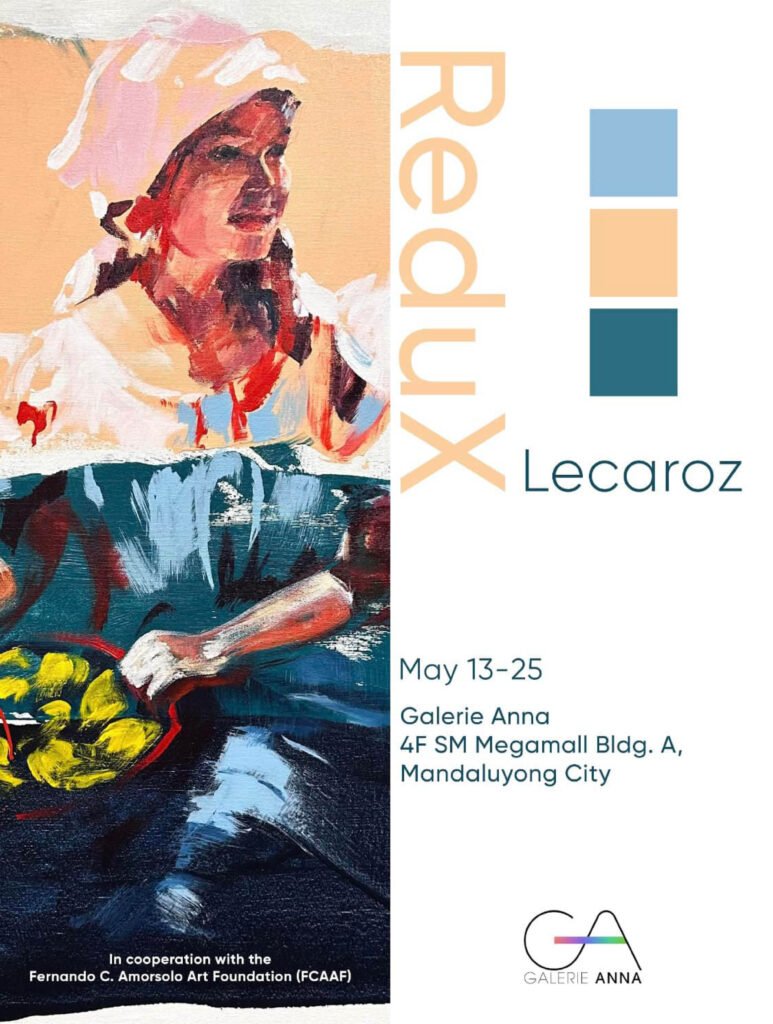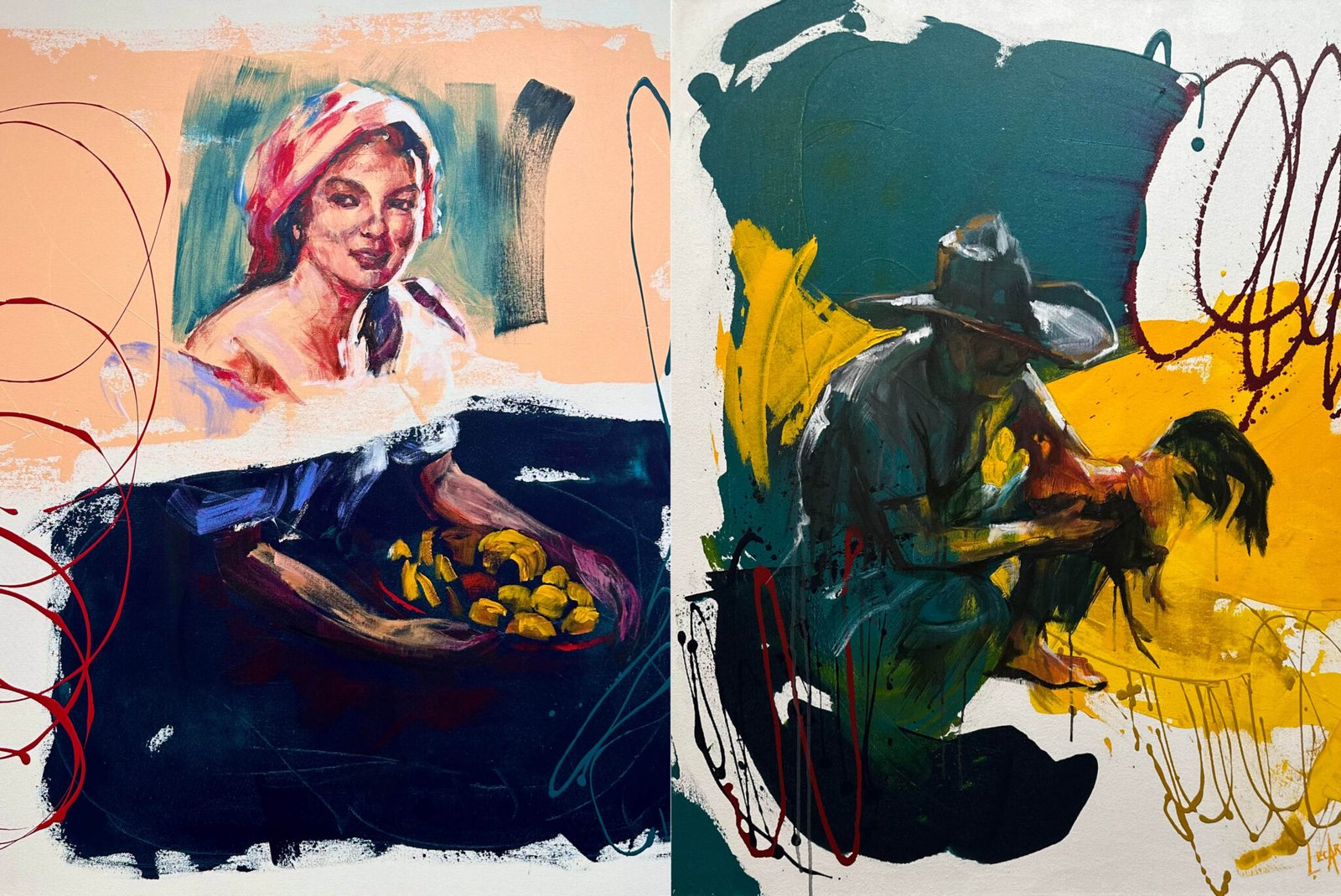Interview Patrick Kasingsing
Images Galerie Anna (Celeste Lecaroz)
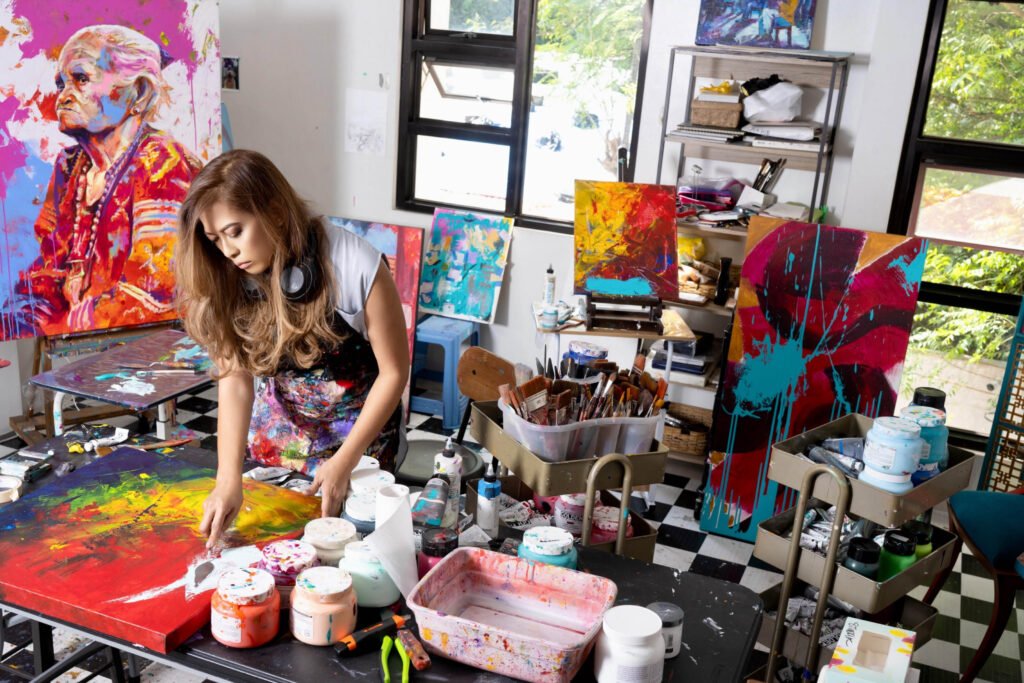

Editor’s note: What follows is an edited press release from the artist, complemented by a follow-up interview by Kanto.
Visual artist Celeste Lecaroz pays tribute again to National Artist Fernando Amorsolo with her exhibit entitled, “Redux” to be held at the Galerie Anna (4th Floor, SM Megamall Building A) from May 13 to 25, 2023.
“Redux” is the 10th solo show of Lecaroz since 2018, and her third featuring derivative paintings of Amorsolo that she creates in spontaneous realism style. Previously, there were the “Repetitio” exhibits held in 2021 in Makati City and in Bacolod City in 2022. All of the works are officially licensed by the Fernando C. Amorsolo Art Foundation.
What makes this latest exhibit more unique is that Lecaroz dares to go beyond the limits of imagination with playful strokes, bolder hues, atypical color combinations, and irregular patterns. Aside from paintings, the “Redux” also features functional artworks such as furniture.
This latest collection of works is Lecaroz’s contribution to the celebration of National Heritage Month (Pambansang Buwan ng Pamana), which is held every May. For Lecaroz, art is an enduring vessel of history. “Paintings are time capsules,” she explains. “And keeping a painting is capturing a moment when an artist perceives a certain reality and commits emotions and intellect on a material surface. Time, soul, and matter coming together in one work.”
We caught up with Ms. Lecaroz, no stranger to Kanto, to uncover her motivations and vision for her latest series.
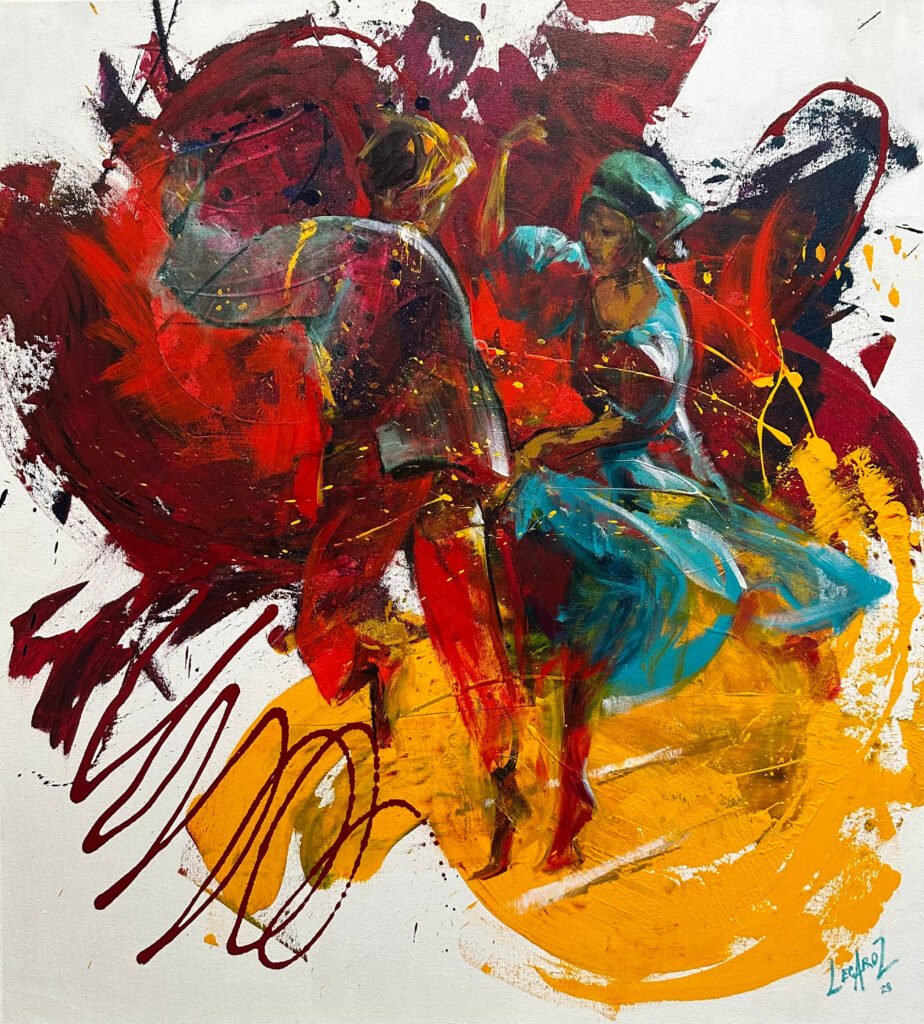

Hi Celeste! How has it been? You’ve done explorations with Amorsolo’s work before but not to this degree which incorporates abstraction, a daring juxtaposition with his impressionistic style of painting. What was the idea behind the series?
Hello, Kanto! For this series, I want viewers to accompany me on this journey of understanding various elements in a visual language. In creating this body of work, I made attempts to understand and introduce graphic elements that may have been marginalized, taken for granted, or lacked emphasis in previous pieces, in my preoccupation to put front and center, the stories, figures, and characters in my artworks.
This time, I was guided more by intuition: Dragged brushstrokes, spiral lines, paint smothered in seeming abandon, color overlaps, jagged edges, and blank spaces (that are in fact titanium white paint, not bare canvas) populate the picture but are more central for the eyes to see.
The wanton strokes that characterize my abstract paintings today, unlike the accidental paint splashes of my spontaneous realist works in the past, are no longer a means to an end. This time, a shift has taken place; the focus is no longer on whole figures but on the abstractions. The images I painted that were derived from Amorsolo’s paintings, are still the creative anchor, but they are now subject to the ebb and flow of the intuitive strokes in the creation process. Reduced to just a figure or two, cropped within tighter compositions, the loosed figures have become personas that don’t anymore need to delight or amuse the viewers, they ARE commanding the viewer to see them, and only them. The looseness and broken edges and forms, very much unlike the way the Master had depicted them, seem to present challenges to the viewer’s vision, an unmooring from the conventional and an unsettling yet also striking image that invites introspection.
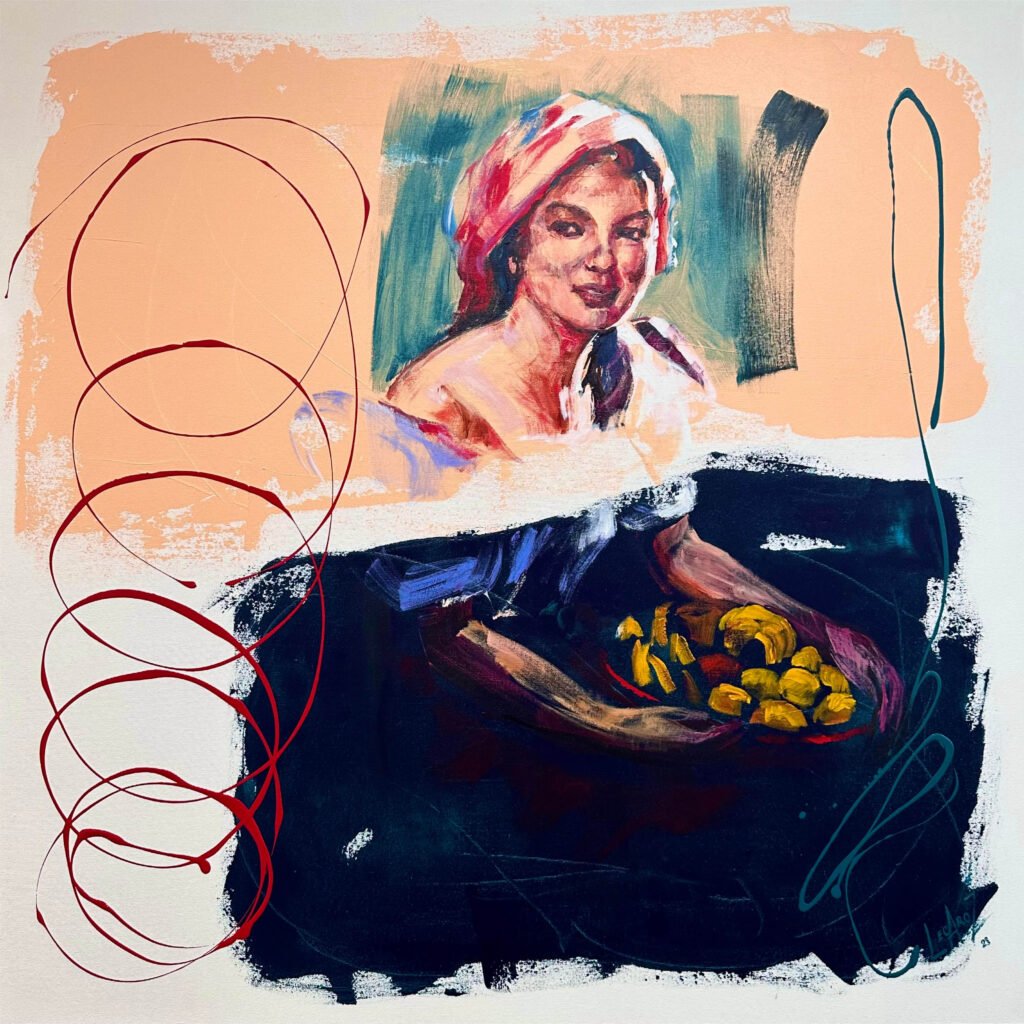

Semantically, I wanted to pose a challenge in the way we appreciate norms. Women’s beauty and success, for instance, are more socially appreciated when depicted as acquiescing, graceful, proper, and sweet. Breaking the tyranny of the nice and sweet is also a theme I had in mind while working on this. Maestro Fernando Amorsolo, a true artist sensitive to the era’s zeitgeist, felt perhaps that beauty was embodied in the typical Filipina whose angelic features are accentuated with a round face and a soft gaze. Our zeitgeist today is different. For Redux, I wanted to argue that while we continue to recognize beauty in women, we leave more openness, gaps, and room for questions and discussions, wanting to accommodate more, and recognizing that inclusivity is a virtue we all must strive for.
What message do you wish to impart to viewers who are both familiar and unfamiliar with Amorsolo’s work with this series?
I wish for viewers to see the “why” beyond the “how” in artmaking. I want them to leave the show with more questions (be it for me or themselves), demanding more answers, rather than finding immediately what is pleasing and beautiful, and choosing to cover up, disregard, or what jars or disturbs them about the compositions.
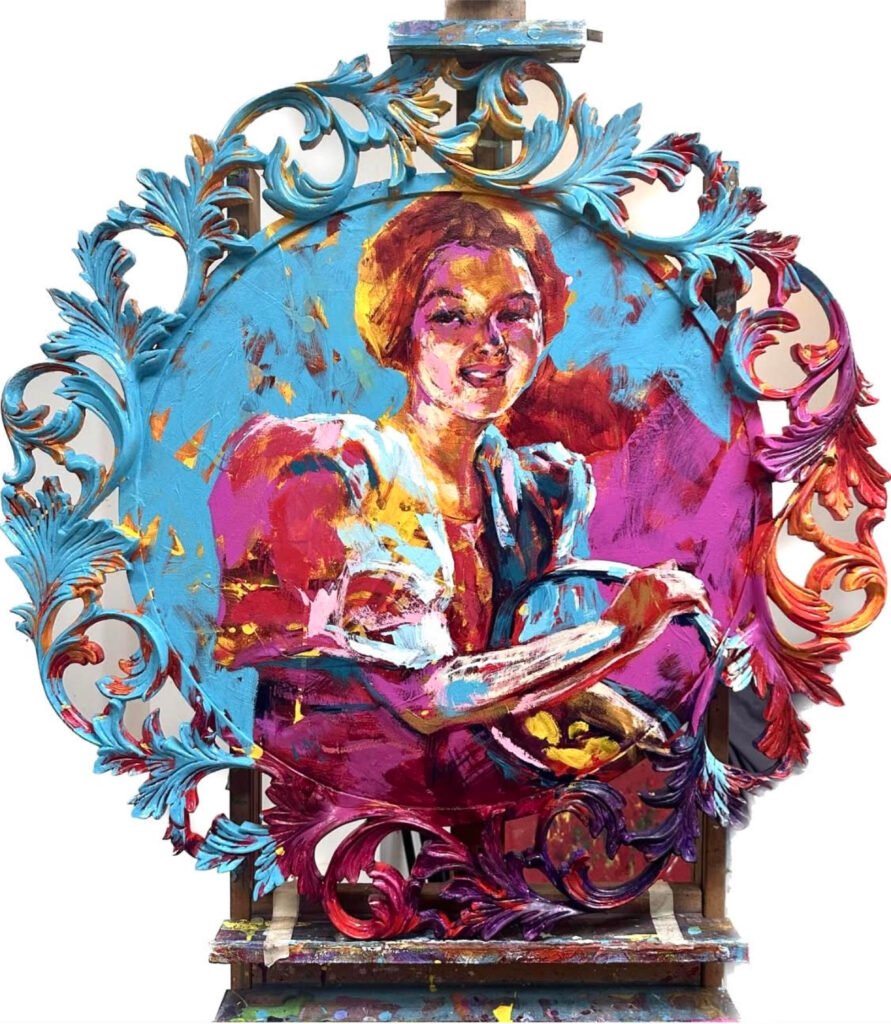

What was the experience like in the creation of the works? We sense a lot of energy and spontaneity from the abstracted brushstrokes, a contrast from the bucolic scenes Amorsolo often painted. Was there a point where you knew you can abstractify the piece or was it all a very spontaneous, emotive process?
In their natal form, all the paintings were complete abstract works out of sheer intuition. I had no guideposts as to which image would land on which canvas. In the end, I would inquire while staring at each canvas “What image are you?”. The curves, the gaps, the swirls of paint, and the elements would then seemingly complete the puzzle when juxtaposed with the right image. And emotion comes to play in this kind of art-making. As if telling me, who are you to say what is beautiful for the eyes to see? What is the correct way to paint? What is the right way to perceive beauty and harmony?
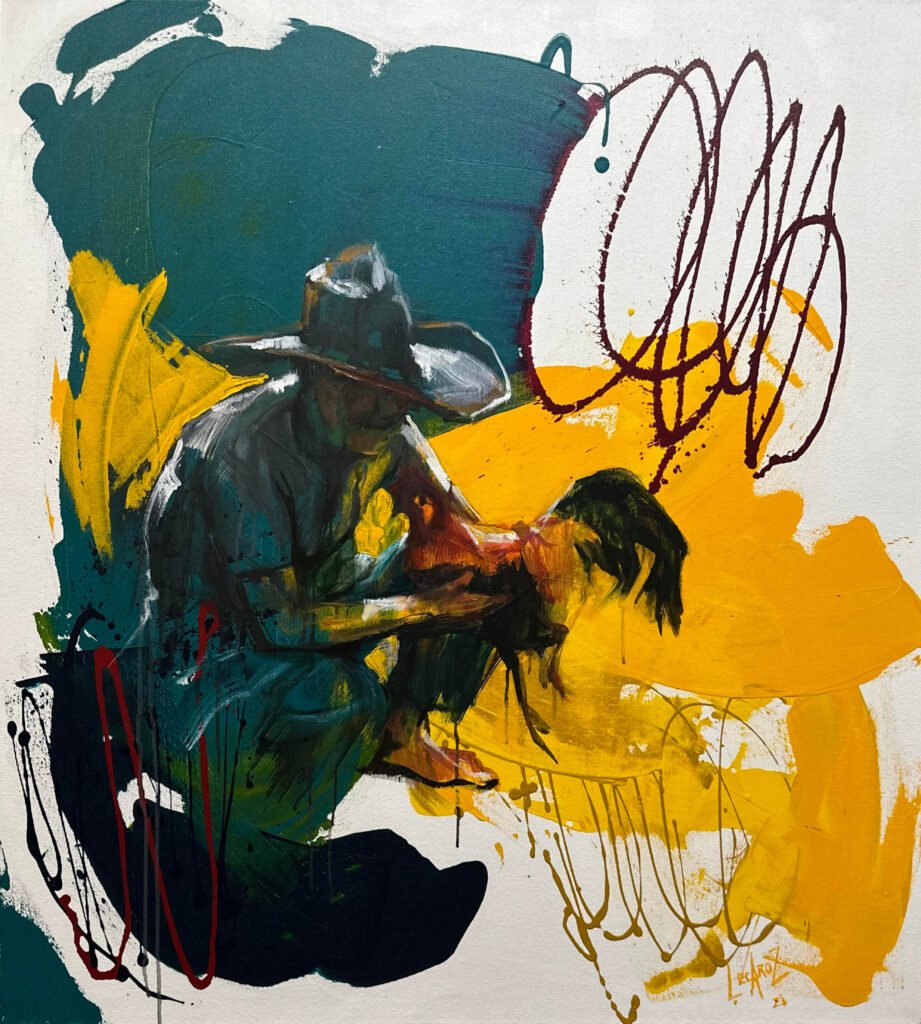
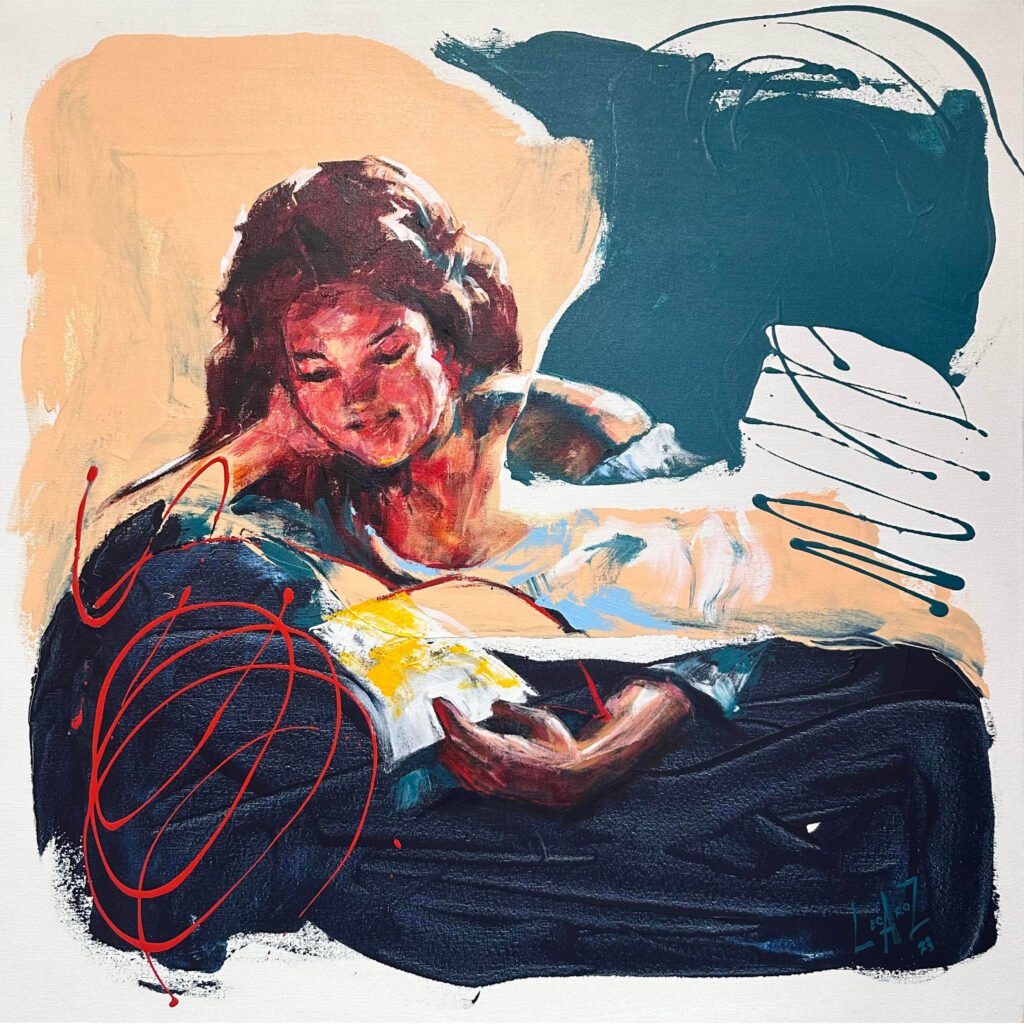
The series is especially interesting as it is an artistic showcase meant to celebrate National Heritage Month. What qualities and characteristics of art do you think make it an “enduring vessel of history,” but also a potent mirror of current realities?
As a homage to Fernando Cueto Amorsolo, the first National Artist of the Visual Arts, my repetition of the Master’s images functions like a time capsule, giving us a glimpse of Filipina beauty standards and the rural idyllic life that were the ideals raised by a post-war society still unshackling from a lengthy colonial past. Immersed in today’s realities, viewers of the arts today must keep on questioning purpose, will, and power so we can recognize and meet the challenges that hinder us from reaching life’s truths. That is the only measure I hold my works against. •
For more information about “Redux” contact Galerie Anna at galerie.anna@yahoo.com or at 09568656472, or visit their Facebook page @galerieanna
